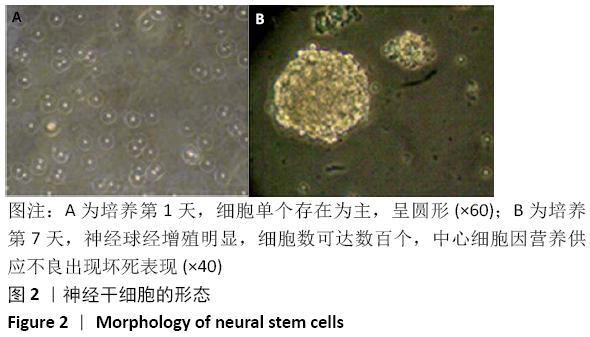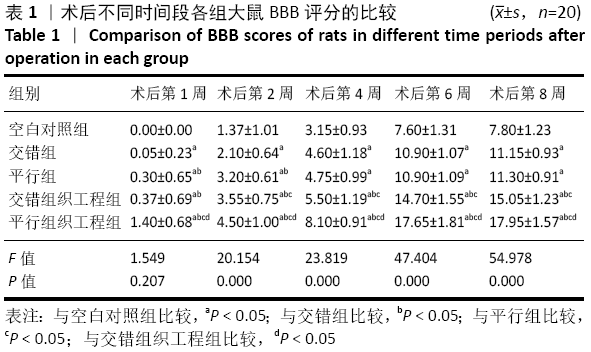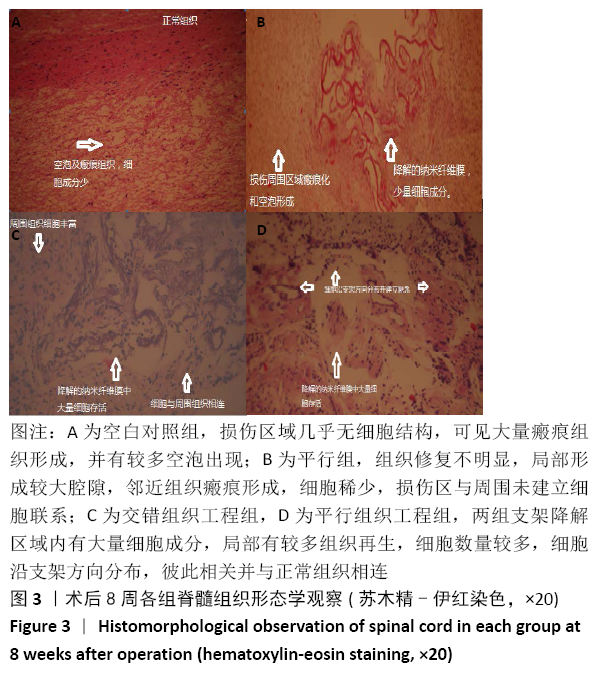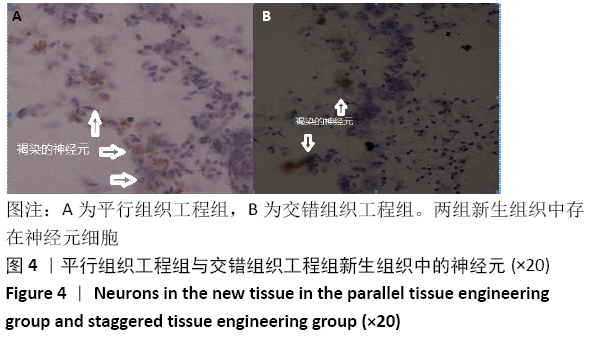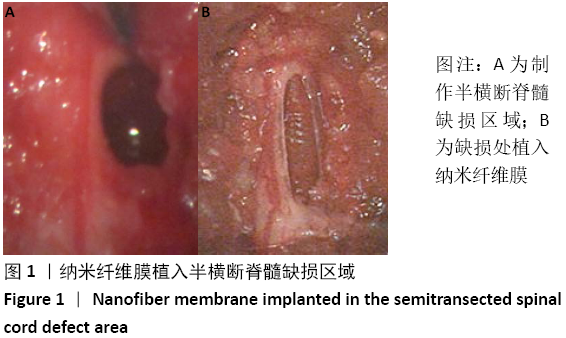中国组织工程研究 ›› 2021, Vol. 25 ›› Issue (10): 1550-1554.doi: 10.3969/j.issn.2095-4344.3069
• 纳米生物材料 nanobiomaterials • 上一篇 下一篇
纳米组织工程化脊髓修复脊髓损伤
周继辉1,姚 猛2,王岩松3,李新志1,周 游1,黄 卫1,陈文瑶1
- 1三峡大学附属仁和医院骨科,湖北省宜昌市 443001;2哈尔滨医科大学附属第二医院脊柱外科,黑龙江省哈尔滨市 150086;3哈尔滨医科大学附属第一医院脊柱外科,黑龙江省哈尔滨市 150007
Spinal cord injury repaired by using nano tissue-engineered spinal cord
Zhou Jihui1, Yao Meng2, Wang Yansong3, Li Xinzhi1, Zhou You1, Huang Wei1, Chen Wenyao1
- 1Department of Orthopedics, Affiliated Renhe Hospital of China Three Gorges University, Yichang 443001, Hubei Province, China; 2Department of Spinal Surgery, Second Affiliated Hospital of Harbin Medical University, Harbin 150086, Heilongjiang Province, China; 3Department of Spinal Surgery, First Affiliated Hospital of Harbin Medical University, Harbin 150007, Heilongjiang Province, China
摘要:
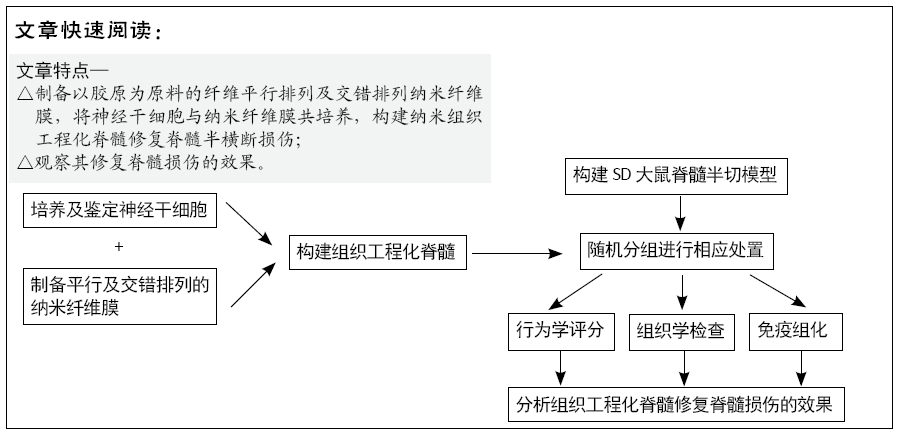
文题释义:
纳米组织工程化脊髓:支架以胶原为原料,应用电子纺丝技术制备纤维平行排列及交错排列的纳米纤维膜,种子细胞为SD大鼠脊髓源性神经干细胞,神经干细胞已被证实为优质种子细胞,通过共培养7 d使神经干细胞贴附于纳米纤维膜表面,二者共同构建组织工程化脊髓。
脊髓损伤模型:实验采用了脊髓半切损伤模型,显露脊髓中央动脉作为中线标志,以预先定位的T8棘突位置为中心,沿中线右侧切除一矩形长3-5 mm的半横断脊髓缺损区域,胸髓损伤不会危及生命中枢,损伤结果确切,动物出现后肢功能障碍及尿便障碍,修复术后通过行为学/组织学及免疫组化结果进行综合分析,得出结论。
背景:应用组织工程修复脊髓损伤是近年来的研究热点,多数研究仍停留在体外实验阶段。
目的:将新型胶原纳米纤维膜与神经干细胞复合构建组织工程化脊髓,探寻其修复脊髓损伤的效果。
方法:以胶原为原料,应用电子纺丝技术制备纤维平行排列及交错排列的纳米纤维膜;将新生大鼠脊髓源性神经干细胞分别接种于两种纳米纤维上培养7 d,构建组织工程化脊髓。建立SD大鼠脊髓半横断动物模型,随机分5组干预:空白对照组未植入任何材料;平行组织工程组与交错组织工程组植入对应的组织工程化脊髓,交错组与平行组植入对应排列的纳米纤维膜。术后1-8周进行改良行为学BBB评分;术后8周取术区脊髓组织,进行苏木精-伊红染色与免疫组化染色。实验获得哈尔滨医科大学实验动物福利和伦理管理委员会批准。
结果与结论:①平行组织工程组术后各时间点的改良行为学BBB评分均高于其余4组(P < 0.05),交错组织工程组、平行组、交错组各时间点的评分高于空白对照组(P < 0.05),交错组织工程组术后2-8周的评分高于平行组、交错组(P < 0.05),平行组术后1,2周的评分高于交错组(P < 0.05);②苏木精-伊红染色显示,空白对照的损伤区域几乎无细胞结构,可见大量瘢痕组织形成;平行组、交错组抑制了瘢痕组织形成,组织修复不明显,邻近组织瘢痕形成,损伤区与周围未建立细胞联系;两组织工程组支架降解区域内有大量细胞成分,局部有较多组织再生,细胞数量较多,细胞沿支架方向分布,彼此相关并与正常组织相连;③免疫组化染色显示,两组织工程组可见神经元细胞;④结果表明,纳米组织工程化脊髓修复脊髓损伤的效果良好,以平行纳米纤维膜构建的组织工程化脊髓修复效果更佳。
https//orcid.org/0000-0002-2646-5343 (周继辉)
中国组织工程研究杂志出版内容重点:生物材料;骨生物材料; 口腔生物材料; 纳米材料; 缓释材料; 材料相容性;组织工程
中图分类号:
